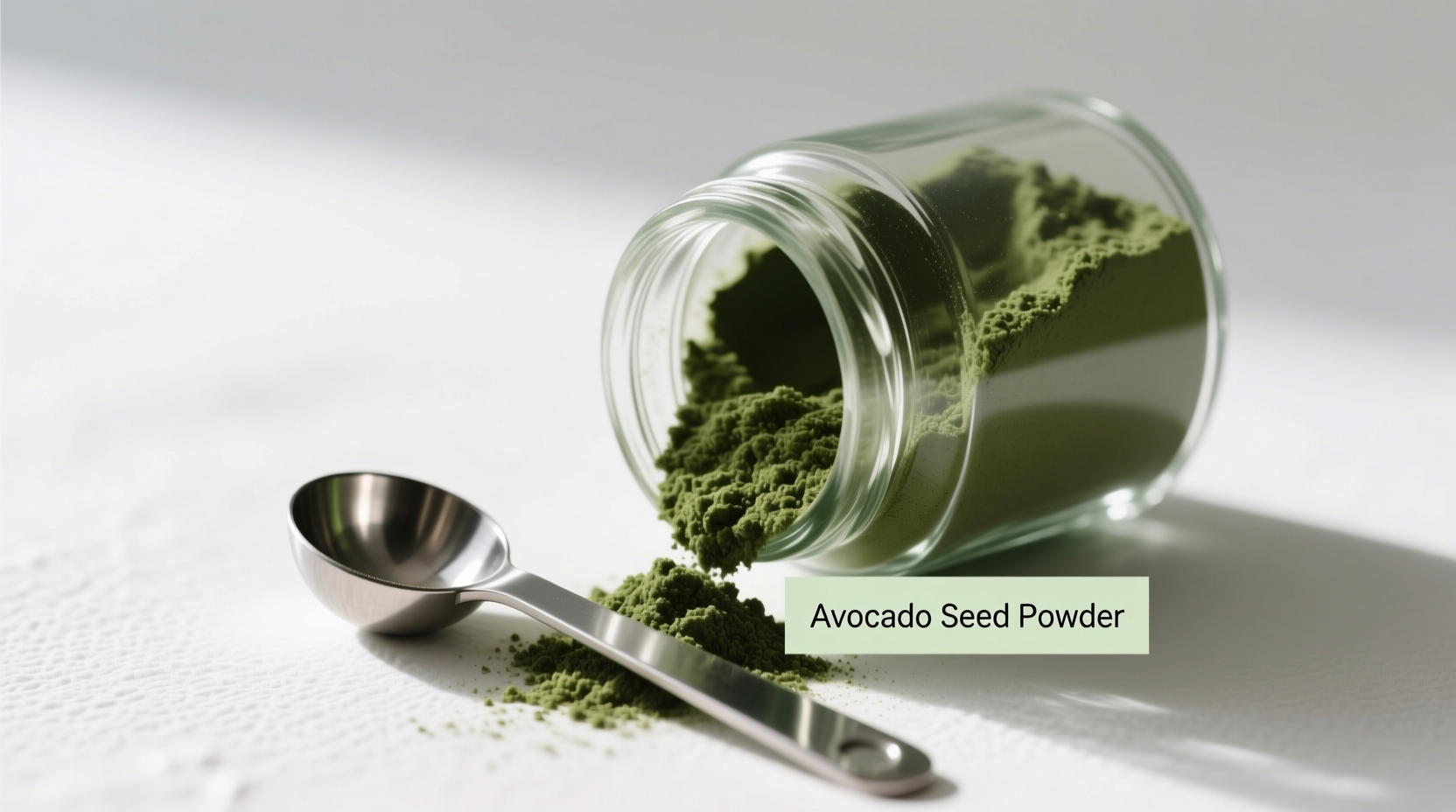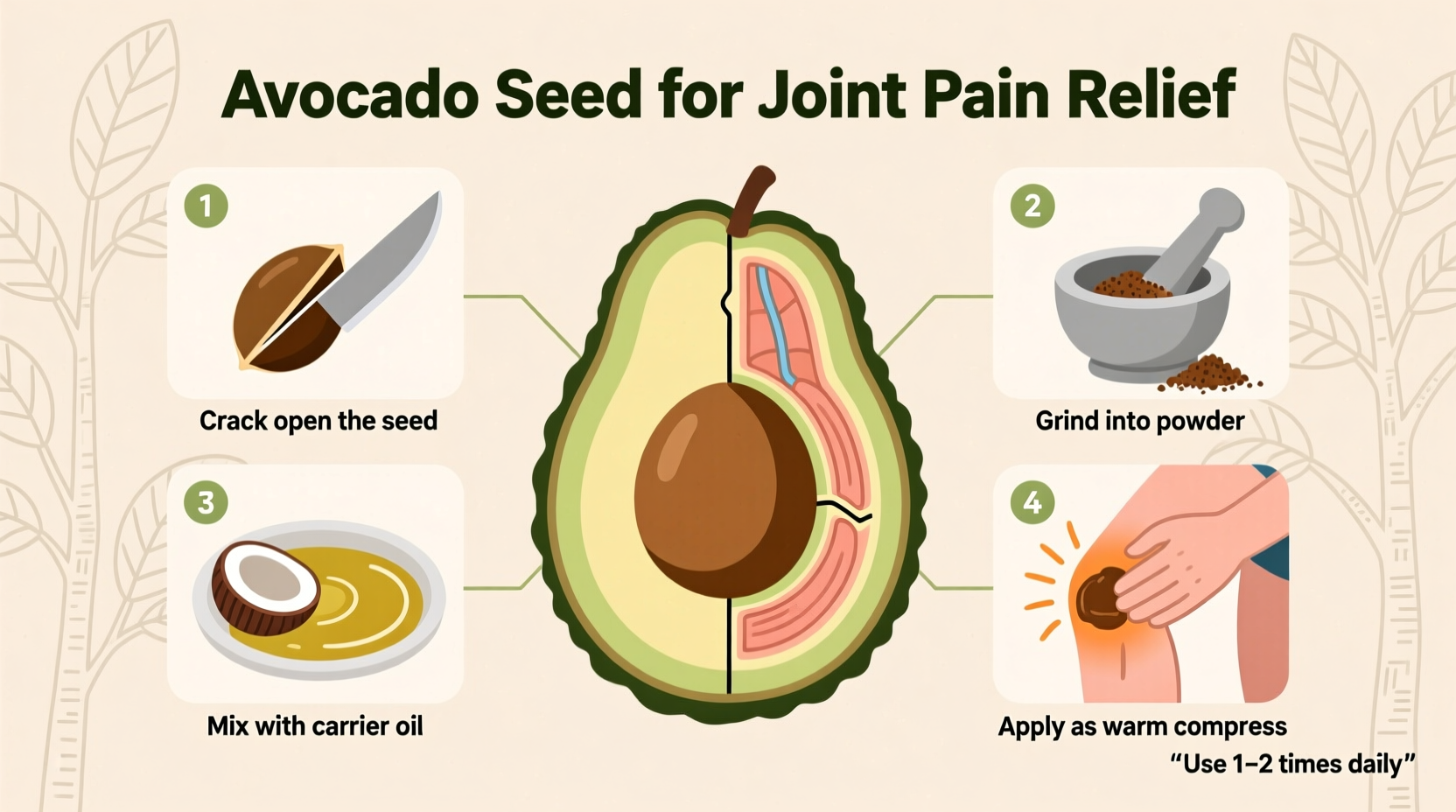Avocado seeds contain antioxidants and anti-inflammatory compounds like phenols and flavonoids that may provide modest joint pain relief, but scientific evidence is limited to preliminary lab studies. Never consume avocado seeds raw—they contain persin which can cause digestive issues. The safest approach is using avocado seed powder in small amounts (1/4 teaspoon daily) mixed with food or tea, while continuing prescribed medical treatments for joint conditions.
Why People Turn to Avocado Seeds for Joint Pain
When joint pain strikes, many search for natural alternatives to complement their treatment plan. Avocado seeds—often discarded as waste—have gained attention in wellness circles for their potential anti-inflammatory properties. While not a replacement for medical care, understanding how to safely incorporate this kitchen byproduct could provide supplementary comfort.
Safety First: Critical Considerations
Before experimenting with avocado seeds, recognize these essential safety points:
- Avocado seeds contain persin, a fungicidal toxin that can cause nausea or digestive discomfort in sensitive individuals
- No clinical trials confirm avocado seeds effectively treat human joint conditions
- The FDA hasn't approved avocado seeds for medicinal use
- Never replace prescribed arthritis medications with seed remedies
| Avocado Seed Component | Potential Benefit | Scientific Evidence Level |
|---|---|---|
| Phenolic compounds | Antioxidant effects | Lab studies only (Journal of Agricultural and Food Chemistry, 2013) |
| Flavonoids | Anti-inflammatory properties | Animal studies (Phytotherapy Research, 2017) |
| Protease inhibitors | Potential pain modulation | Preliminary cell research only |
Proper Preparation Methods
Raw avocado seeds aren't safe for consumption. Proper preparation reduces potential risks while maximizing potential benefits:
Drying and Powdering Process
- Remove seed from ripe avocado and wash thoroughly
- Air-dry seed for 3-5 days until brittle (don't use oven drying which may degrade compounds)
- Break dried seed using hammer wrapped in cloth
- Grind pieces in coffee grinder dedicated to spices
- Sift through fine mesh to remove coarse fragments
- Store powder in airtight container away from light

Safe Usage Guidelines
Follow these evidence-informed usage recommendations:
Daily Dosage Protocol
Start with minimal exposure to assess tolerance:
- Week 1: 1/8 teaspoon powder mixed in food or tea
- Week 2: 1/4 teaspoon if no adverse effects
- Maximum: Never exceed 1/2 teaspoon daily
- Duration: Limit continuous use to 4 weeks, then take 2-week break
Effective Preparation Methods
Two preparation methods show the most promise for joint discomfort:
Avocado Seed Tea
Simmer 1/4 teaspoon powder in 8oz water for 10 minutes. Add lemon juice to enhance antioxidant absorption. Drink 20-30 minutes before meals to potentially reduce inflammation.
Topical Application
Mix 1/2 teaspoon powder with 1 tablespoon coconut oil and 3 drops of peppermint essential oil. Gently massage into affected joints twice daily. The cooling sensation provides temporary relief while compounds absorb through skin.
Realistic Expectations and Limitations
Understanding what avocado seeds can and cannot do prevents disappointment and unsafe practices:
| Scenario | Appropriate Use | Not Recommended |
|---|---|---|
| Mild joint stiffness | As complementary approach with conventional treatment | As sole treatment method |
| Post-exercise soreness | Topical application for temporary relief | Replacing proper recovery protocols |
| Chronic arthritis | Discussion with rheumatologist about complementary options | Discontinuing prescribed medications |
When to Consult Your Doctor
Joint pain can indicate serious conditions requiring professional care. Seek medical advice if you experience:
- Persistent pain lasting more than two weeks
- Swelling, redness, or warmth around joints
- Morning stiffness lasting over 30 minutes
- Joint deformities or reduced range of motion
- Numbness or tingling in extremities
The Arthritis Foundation recommends professional diagnosis before starting any complementary approach to ensure safe integration with your treatment plan.
Complementary Natural Approaches
For comprehensive joint support, consider these evidence-backed complementary approaches alongside conventional treatment:
- Omega-3 fatty acids (found in fish oil) show moderate evidence for reducing joint tenderness (NIH Office of Dietary Supplements)
- Gentle movement practices like tai chi improve joint function according to CDC recommendations
- Vitamin D supplementation if deficient, as low levels correlate with increased joint pain
- Weight management to reduce stress on weight-bearing joints
Final Considerations
While avocado seeds contain compounds with theoretical benefits for joint health, current evidence remains preliminary. The most responsible approach treats them as one potential component of a comprehensive joint care strategy—not a standalone solution. Always prioritize treatments with stronger scientific backing while discussing any complementary approaches with your healthcare provider.











 浙公网安备
33010002000092号
浙公网安备
33010002000092号 浙B2-20120091-4
浙B2-20120091-4